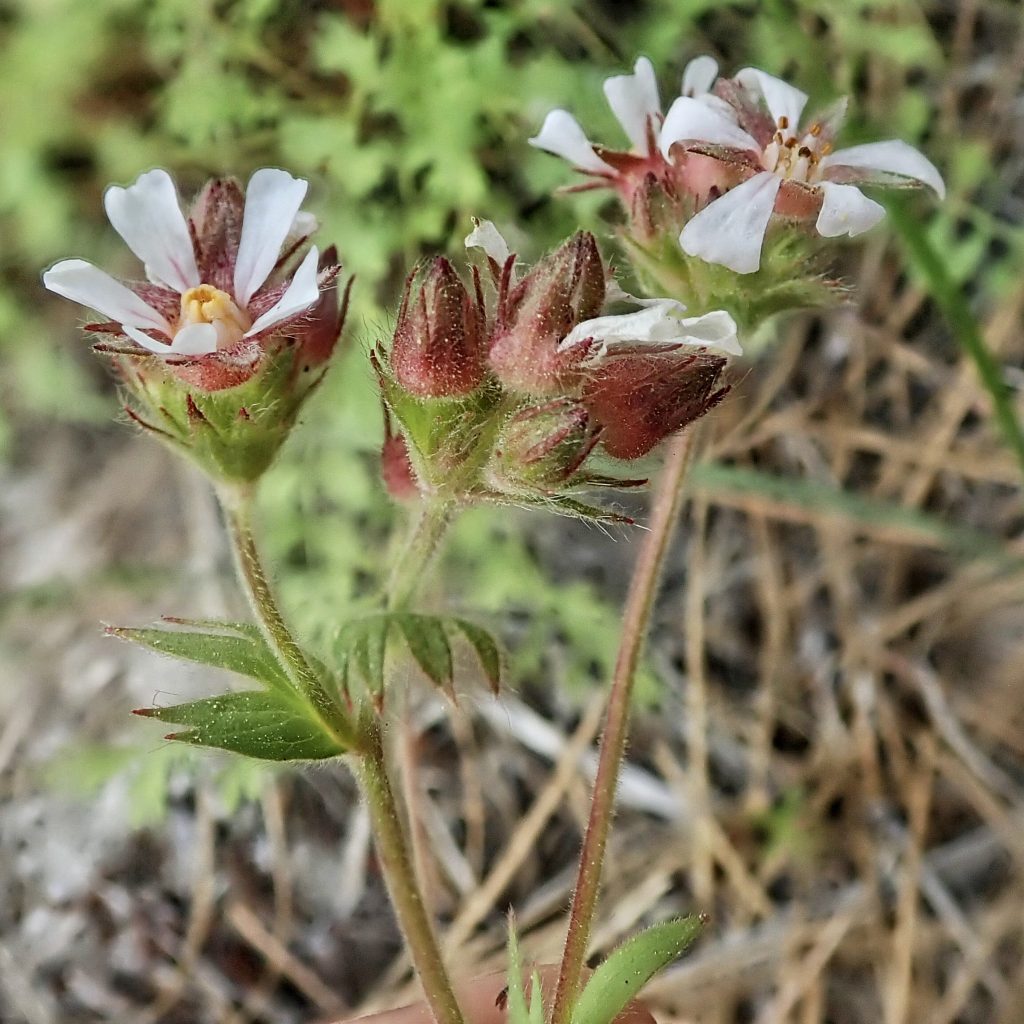
I had never identified this pretty but easily overlooked member of the family Rosaceae, which goes by the common names pinewoods horkelia, dusky horkelia, tawny horkelia, pink pinwheels, and small-flowered horkelia, until my recent trip to the Metolius River for a grass workshop with Cindy Roché. And, though it is considered to be locally abundant, this was the only specimen I found.
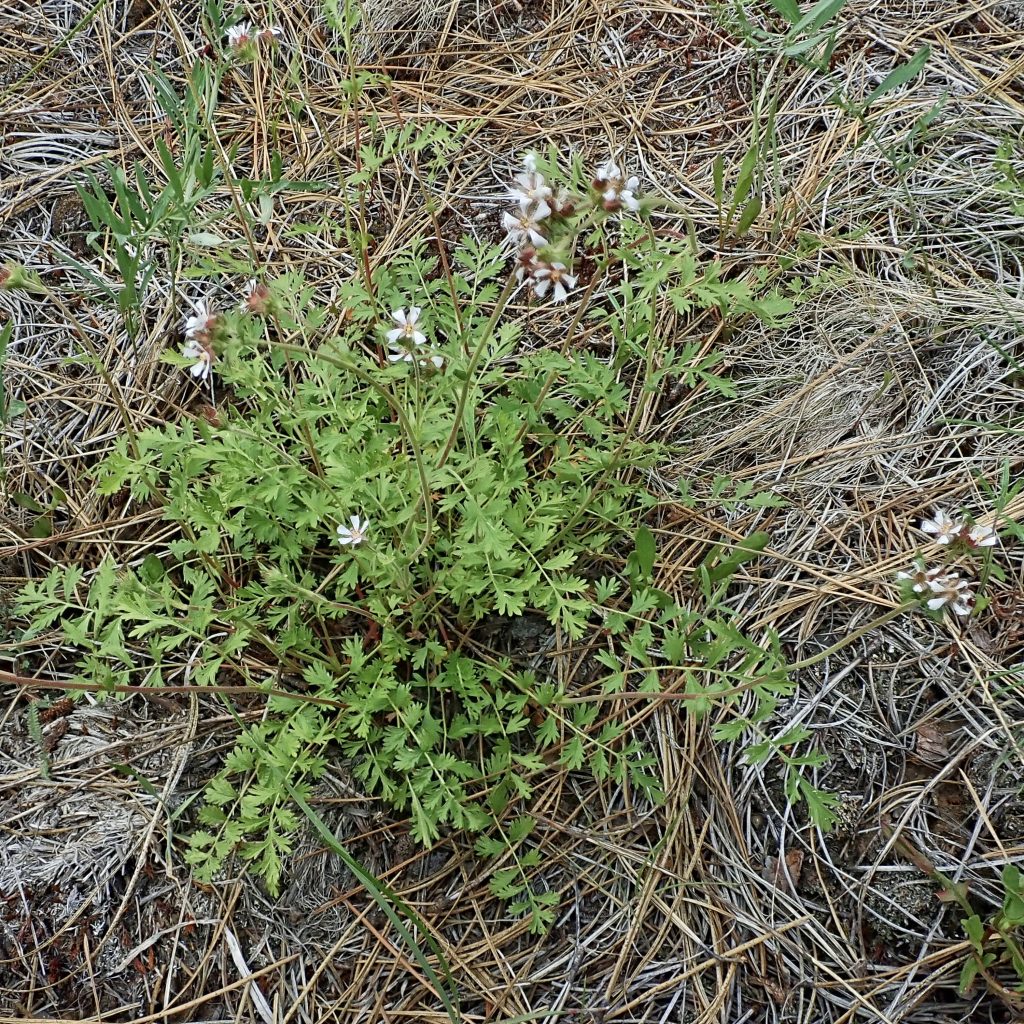
Horkelia fusca doesn’t seem to have played a large part in the lives of indigenous peoples, since I can find no ethnobotanical information about it. There are several subspecies in our region, and I believe this is ssp. parviflora because the leaflets are not deeply divided. That is also the most common and widely distributed of the subspecies, and all of the records I found for that part of the Metolius were for this subspecies.
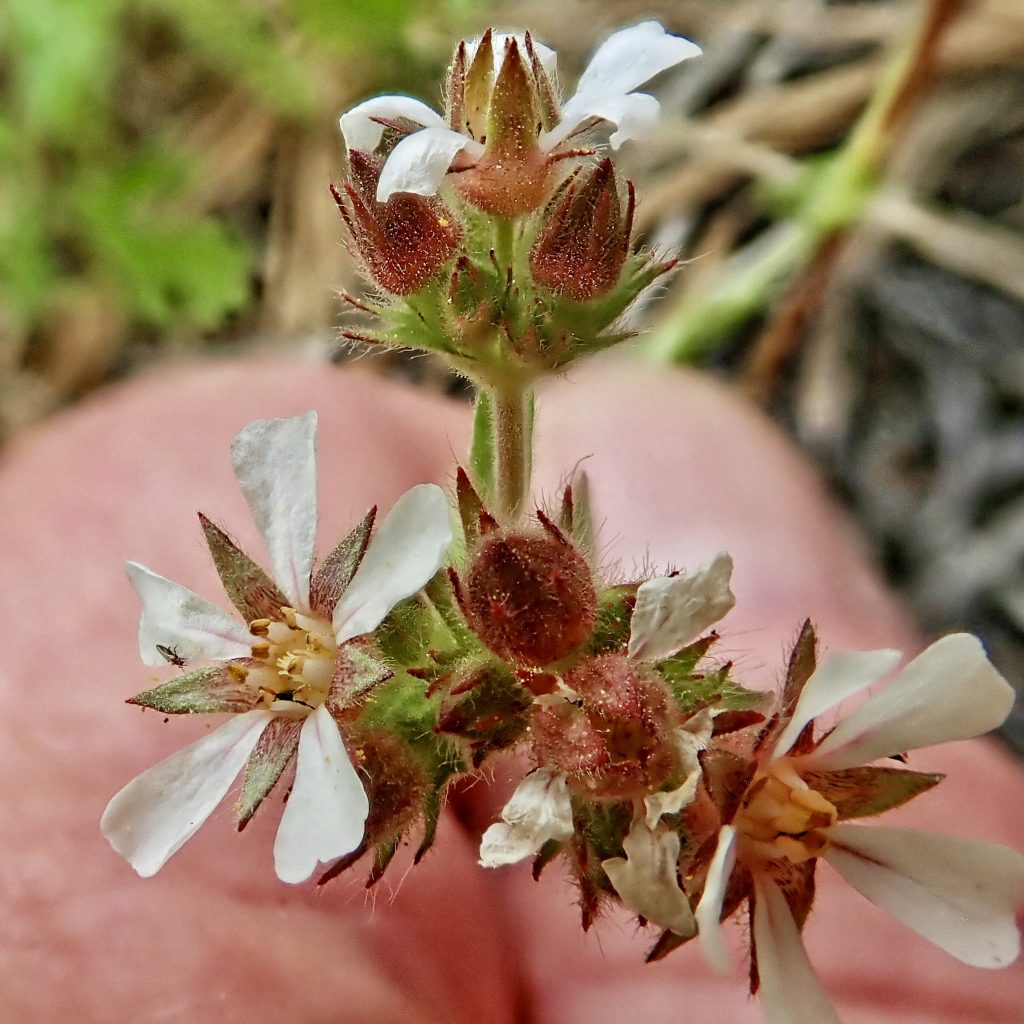
Description-Grows in tufts with erect stems up to 20” tall, and light pink flowers clustered at the stem top; basal leaves up to 12” long, fern like and pinnate with 9-19 bright green, oval, lobed leaflets; stem leaves (actually stipules) much smaller, oval, with pointed lobes; flowers light pink, with reddish calyx, and the petals are narrow at the base and widening at the tip.
Similar species–H. congesta has long hairs on the stems and stipules, only found west of Cascades; H. daucifolia has a greyish rosette and is only found in the Siskiyous; several other species endemic to small areas in sw Oregon/nw California.
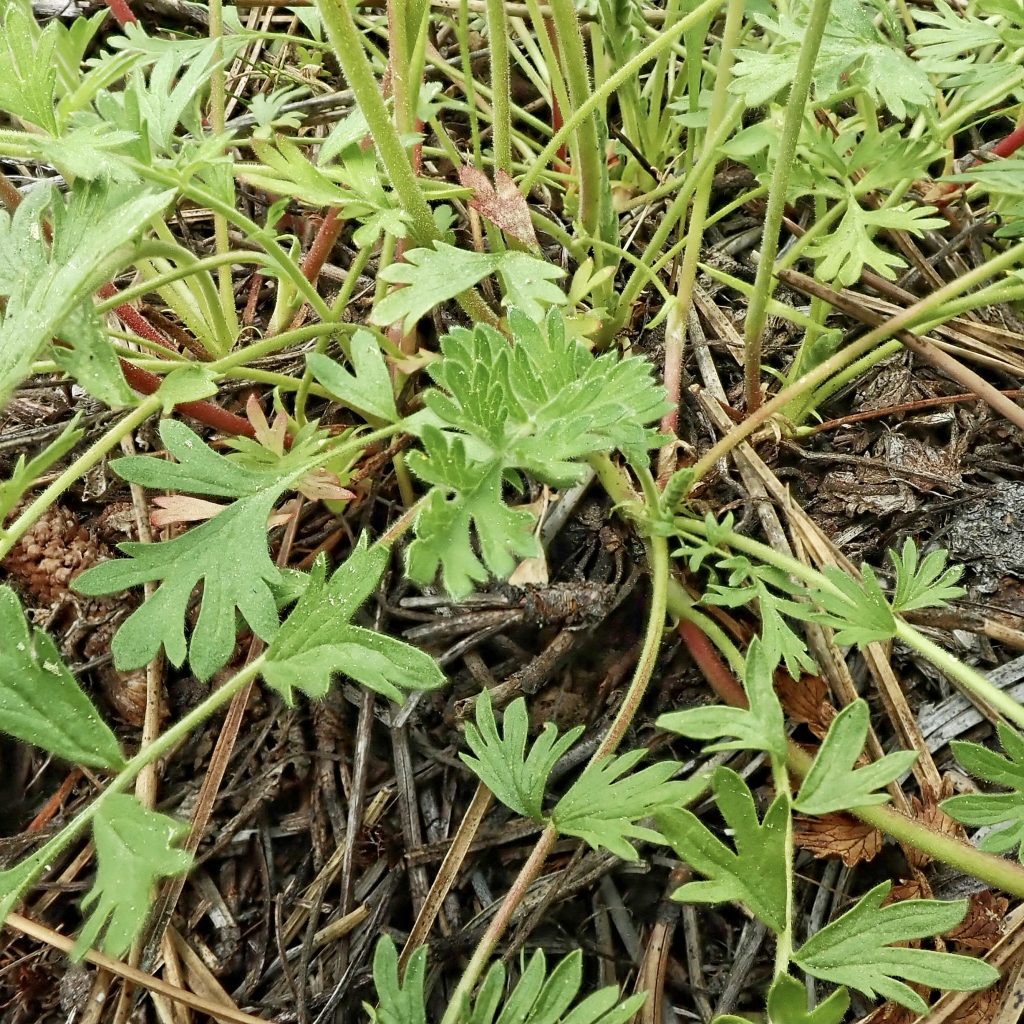
Habitat– Forest openings, moist meadows, and rocky slopes at mid to high elevation elevations.
Range-Western North America; east of Cascade crest from central Oregon to northern California; with montane populations in eastern Oregon and central Washington, and the Siskiyous, Blues, and Wallowas.
Reproductive timing-Blooms June through July
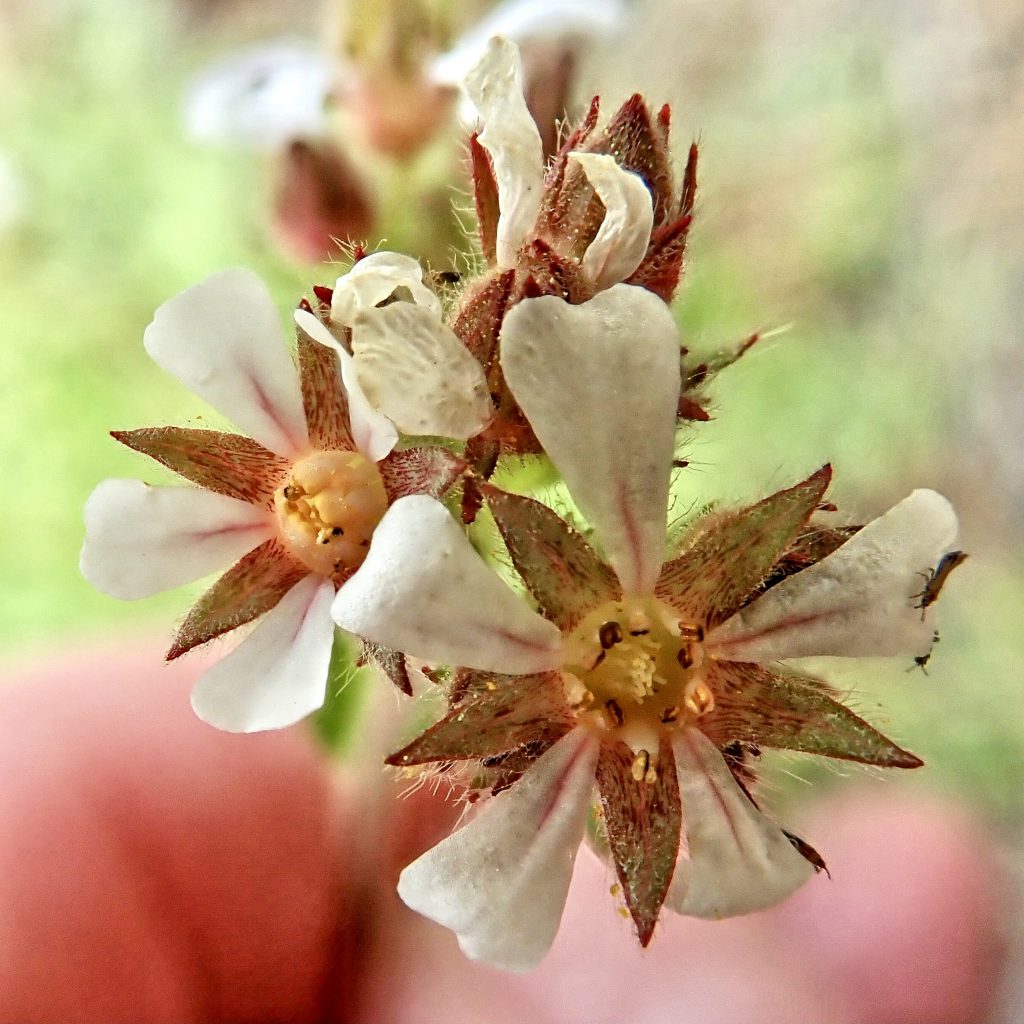
Eaten by-The moths Phymatopus hectoides, Anacampsis fragariella, and some in the leaf mining genus Coptotriche, as well as the butterflies Pyrgus ruralis and Lycaena editha, are known to utilize this plant as a larval host.
Etymology of names–Horkelia is named for Johann Horkel (1769–1846), a German botanist. The specific epithet fusca is from the Latin for ‘dusky/tawny and may refer to the color of the bracts, but John Lindsey didn’t deign to tell us his reasoning on the choice.
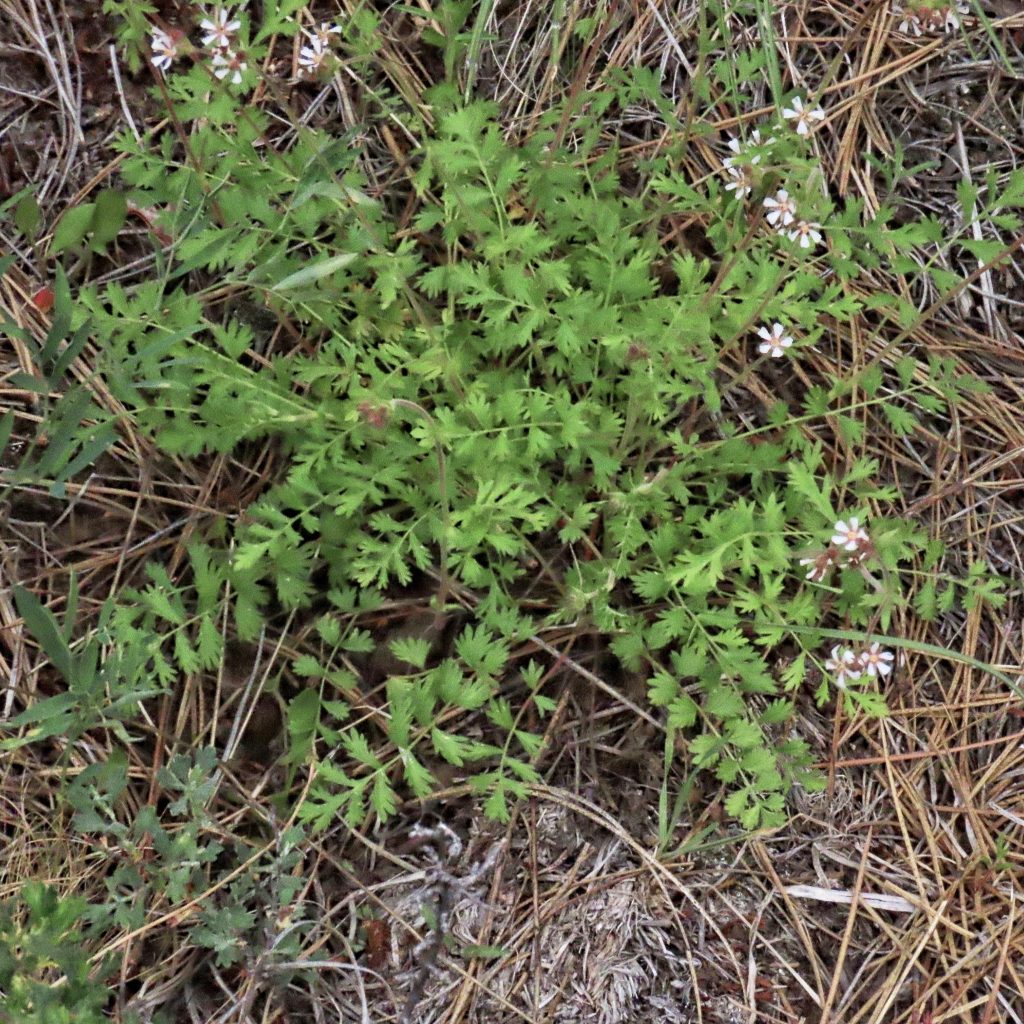
Horkelia fusca in Flora of North America @ efloras.org
https://biology.burke.washington.edu/herbarium/imagecollection/taxon.php?Taxon=Horkelia%20fusca
https://en.m.wikipedia.org/wiki/Johann_Horkel
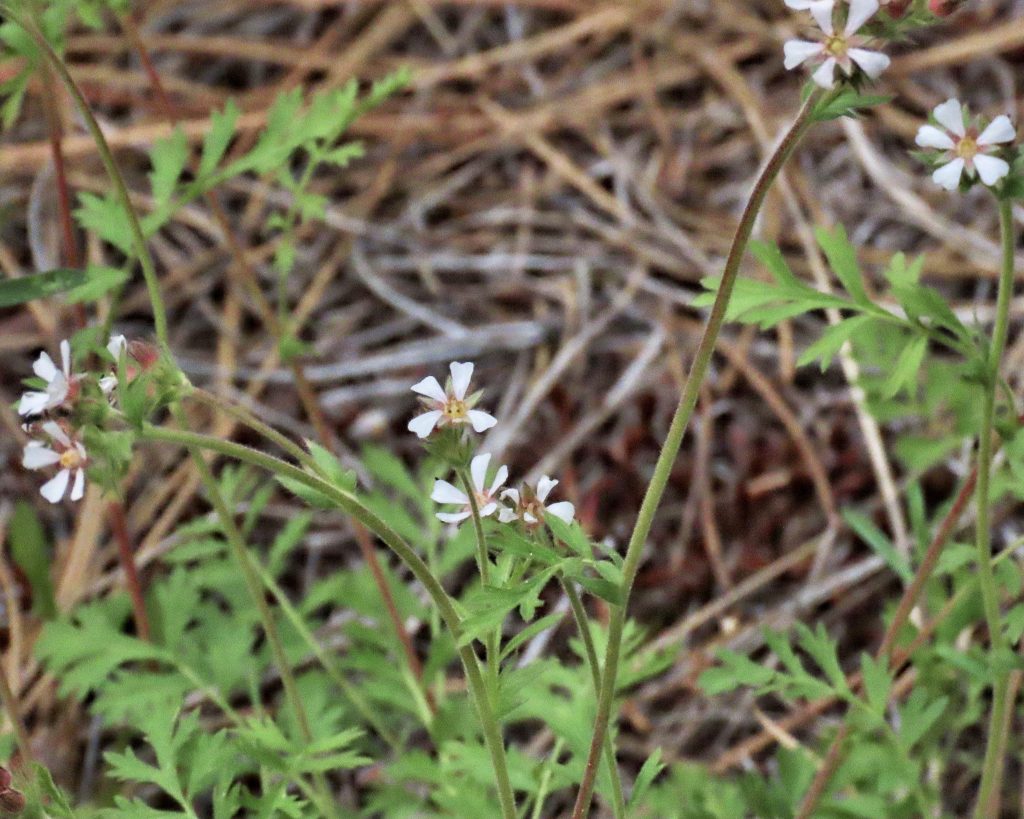
I really enjoyed your profile on this little “pink pinwheel” plant. Adorable! Thank you ☺️